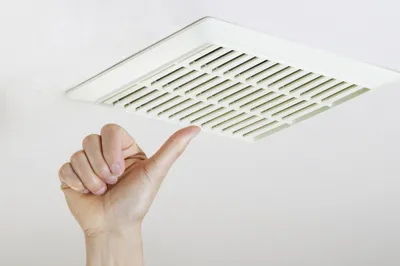This summer has been especially hot across the U.S. (maybe there is something to this whole global warming thing). That aside, the high heat and humidity can make it easy just to turn to air conditioning, which can be cooling but leave you sweating when you see your electricity bill.
Using air conditioning has also been known to cause headaches and respiratory problems, which you don’t want for yourself or your kids. So, instead of flicking on the air conditioner, try one of these six tips to keep your kids’ cool so you can keep your own cool…
1. Take a Dip
Not everyone has an Olympic-sized pool in their backyard, but you don’t need one to get the cooling effects of water. Having a smaller, inflatable pool in the backyard filled with water that’s not too cold (or too hot) will help take the edge off and relieve your sweaty children.
While AmericanPool.com recommends pool water temperatures of 86 to 90-degrees for 3 to 5-year olds, it’s not always easy to regulate this if your little pool has no heating source. It may be best to fill the pool up with a garden hose and then leave it out in the hot sun for several hours before dropping junior in, so it’s not a major shock. Failing that, you can always dip them in the bathtub (especially right before bed).
2. Create a Cold Breeze
Even if it’s too hot to go outside, junior will still want to play, so what to do? ApartmentTherapy.com suggests a simple but cool trick to keep your child’s playroom comfortable while they smash blocks together or finger paint on the wall.
The site suggests grabbing a large (metal) mixing bowl, filling it with ice, and placing it in front of a fan. It also suggests tilting the bowl for maximum exposure of the ice to the breeze from the fan. Sure, the ice will melt, but there’s plenty more where that came from, right?
3. It’s OK to Vent
Did you know that you can cool down your home just by turning on your bathroom fan or stovetop range fan? Well it’s true, according to the Huffington Post. It makes sense; bathroom fans suck moisture out of the room during a shower, so it’s an easy way to reduce humidity (that makes everything feel damp in the heat).
Same goes with kitchen fans; they’re designed to carry heat and steam from cooking out of the room. Just make sure that if it’s a range fan, it’s actually sucking air to an outside vent, and not just recirculating in the kitchen.
4. Use Strategic Placement of Cold
If your little one is sweating and you don’t have fans available or A/C, there is apparently a medically-approved way to keep them from overheating, according to Kidspot.com based in Australia, which means they know a thing or two about heat.
Fill the sink with cold water and place your child’s wrists in it, or put an ice pack or cold cloth on their neck. Apparently targeting these “pulse points” with cold is more effective than some other methods of managing heat. Other sources add that the inside of the elbows and knees also work well, as do the tops of feet and your ankles.
5. Water Your Little Flowers
Of course, dehydration can occur quite quickly when it’s hot, even inside in indirect heat. Depending on the age of your child, they may not be able to vocalize if they’re feeling tired or faint from the heat.
Health Canada advises giving your child water whether they express thirst or not. You can use a colorful cup to entice them to take a sip more often, or you can turn to tasty fruits like watermelon to deliver hydration in a less boring way. Either way, get them into the habit of hydrating themselves, adds the source.
6. Let Them be Free
Ask yourself this important question first: is your child toilet trained? Can they get themselves to the potty without having to find you? If so, then why not let them run “free” indoors when it’s hot? Also, think of the load of laundry you can avoid doing from eliminating clothing for a few hours.
Of course, if they’re napping it’s a different story (unless you have an extraordinarily well-trained child). Consider whether you need any bedclothes at all, and keep them in a light diaper that will prevent accidents. If you’re using a cloth cover, try to use breathable materials like wool.









